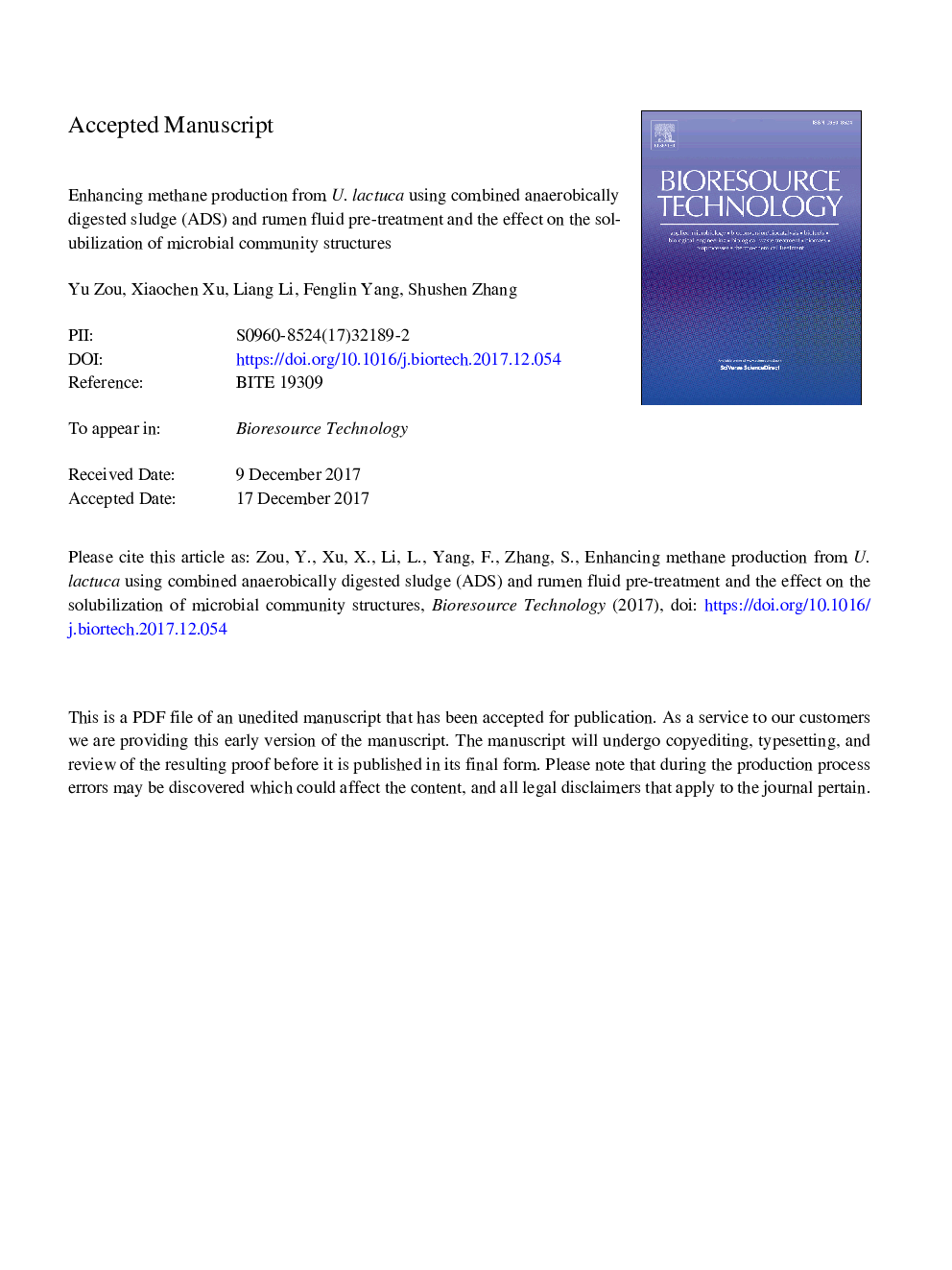| Article ID | Journal | Published Year | Pages | File Type |
|---|---|---|---|---|
| 7068174 | Bioresource Technology | 2018 | 34 Pages |
Abstract
Methane production by the anaerobic digestion of seaweed is restricted by the slow degradation caused by the influence of the rigid algal cell wall. At the present time, there has been no study focusing on the anaerobic digestion of U. lactuca by co-fermentation and pre-treatment with rumen fluid. Rumen fluid can favor methane production from algal biomass by utilizing the diversity and quantity of bacterial and archaeal communities in the rumen fluid. This research presents a novel method based on combined ADS and rumen fluid pre-treatment to improve the production of methane from seaweed. Biochemical methane potential (BMP) tests were performed to investigate the biogas production using combined ADS and rumen fluid pre-treatment at varied inoculum ratios on the performance of methane production from U. lactuca biomass. Compared to the control (no rumen fluid pre-treatment), the highest BMP yields of U. lactuca increased from 3%, 27.5% and 39.5% to 31.1%, 73% and 85.6%, respectively, for three different types of treatment. Microbial community analysis revealed that the Methanobrevibacter species, known to accept electrons to form methane, were only detected when rumen fluid was added. Together with the significant increase in species of Methanoculleus, Methanospirillum and Methanosaeta, rumen fluid improved the fermentation and degradation of the microalgae biomass not only by pre-treatment to foster cell-wall degradation but also by relying on methane production within itself during anaerobic processes. Batch experiments further indicated that rumen fluid applied to the co-fermentation and pre-treatment could increase the economic value and hold promise for enhancing biogas production from different seaweed species.
Related Topics
Physical Sciences and Engineering
Chemical Engineering
Process Chemistry and Technology
Authors
Yu Zou, Xiaochen Xu, Liang Li, Fenglin Yang, Shushen Zhang,
